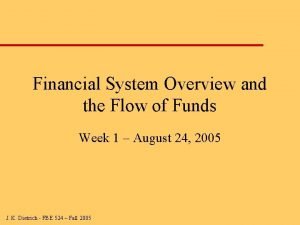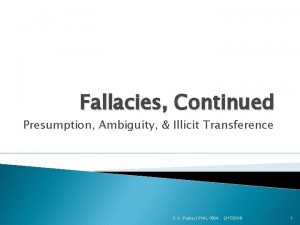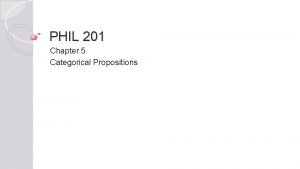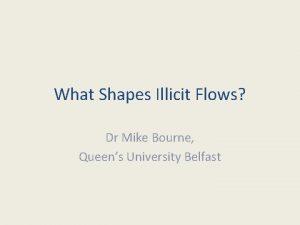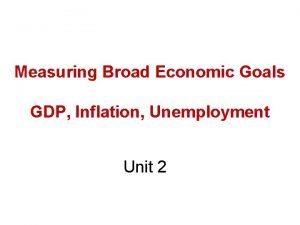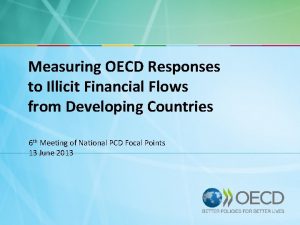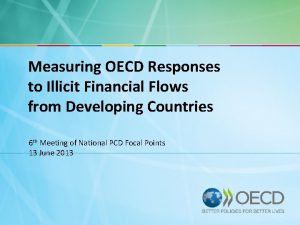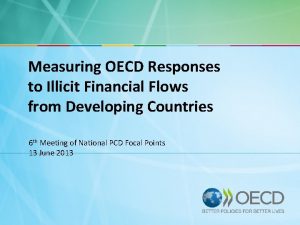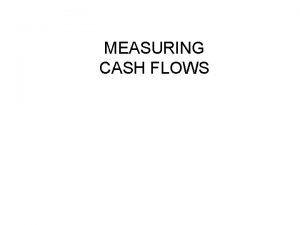Measuring Illicit Financial Flows The Economic Elements Steve








- Slides: 8

Measuring Illicit Financial Flows The Economic Elements Steve Mac. Feely Head of Statistics and Information

Categories of activities that may generate IFFs

IFFs emerging from tax and commercial practices Illicit tax and commercial IFFs to conceal revenues and reduce tax burden: • Illegal tax and commercial IFFs • Examples: Tariff, duty and revenue offences, tax evasion, competition offences and market manipulation • Often part of the non-observed, hidden or shadow economy. • IFFs related to aggressive tax avoidance • Examples: Hiding profits or assets via the manipulation of transfer pricing, strategic location of debt and intellectual property, tax treaty shopping and the use of hybrid instruments and entities. • Can be part of legal business transactions. Only the illicit part of the crossborder flows belongs within the scope of IFFs.

Illegal v illicit • While tax avoidance is legal, aggressive tax avoidance can be detrimental to sustainable development and is, therefore, included in the SDG indicator as an IFF • Statistics cannot be based on legality as national tax laws differ and audits are carried out retrospectively. Thus, the indicator is based on activities that may generate IFFs. • As the boundary between legal, illicit, and illegal tax practices may be unclear, a continuum of activities from legal tax planning to illegal tax evasion can be used.

Statistical Framework for Measuring IFFs Key features: • Country-Level: Allows to measure IFFs at the level of countries (in line with SDG indicator framework) • Comprehensive: Encompasses all types of illicit activities that cause IFFs • Compatible: Aligned to established concepts and standards from economics and accounting. Liaising with new ‘Joint Informal Economy Task Force’ hosted by IMF to ensure consistency.

Main Activities • UNCTAD/UNODC Task Force on the statistical measurement of illicit financial flows is developing methodological guidance for countries. • Involvement of national statistical offices is critical as coordinators of the national statistical systems - data needed to measure IFFs are scattered across many organisations • Latin America IFF project led by UNODC in cooperation with UNODCINEGI Centre of Excellence for Statistical Information; • Africa IFF project led by UNECA & UNCTAD • Asia IFF project led by UNESCAP with UNCTAD/UNODC

Next Steps • Publication of UNCTAD-UNODC Conceptual Framework • Renew call for pilot countries at the Pan-African Conference on IFFs and Taxation, 9 -13 November 2020. • Development of methodological guidelines on IFFs from illicit markets • Sharing of results from pilot studies in Latin America • Development of methodological guidelines on IFFs relating to tax and commercial practices • Sharing of results from pilot studies in Africa and Asia

Thank you
